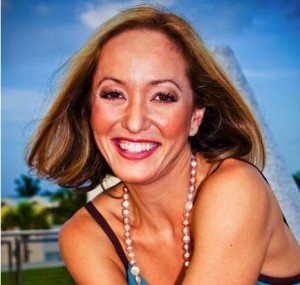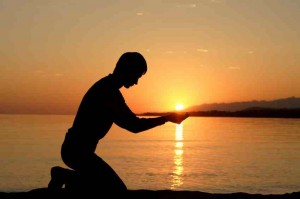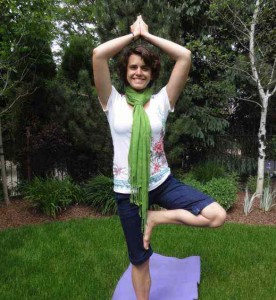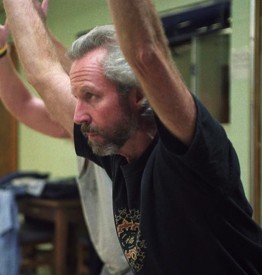The inner light of yoga is like a scared fire. It is the true heart and spirit of the practice. While potent and powerful the magic of the practice is also vulnerable and tenuous. The sacredness of the practice can die easily if we do not tend to it every day. Amidst the cynic’s voice and the inevitable burn-out that comes with steady devotion the true yoga practitioner must find the indefatigable courage to re-kindle the spiritual fire every day.
The sacred fire that illuminates the path of yoga is at once the fire of purification, the karmic fire, and spiritual bliss. In essence the light that shines forth from the practice is nothing less than the revelation of the soul. Yoga assumes that there is divinity in each and every sentient being and it’s sometimes lonely practice aims to give you a pathway to taste the nectar of that divinity within.
In my own physical practice of Ashtanga Yoga strength was pure magic for me. I can still remember the sensation of my shoulder collapsing when I took my first trip to a simple plank position. Even worse was the sensation of falling out of headstand every day with a loud crashing sound for eight straight months. The experience was so devastating that I doubted my ability to ever build strength in my body at all. Until the day when I began to experience the connection between the physical, mental, emotional, and spiritual body I had no way to build a path towards the results that I wanted. One day the magic of the physical movement suddenly revealed a hidden inner realm of mental, emotional, and spiritual strength. In essence my physical weakness was a kind of manifestation of the worldview that I held deeply within. I believed myself to be weak and so I was. I believed in my limitations, my feeling of “less than”, and my doubt. Plagued by insecurity not only could I not lift my body weight off the ground but I could also not stand up for what I believed in. I had to learn true spiritual strength, self confidence at the deepest level, and connection with my own inner divinity before the physical movement that I wanted within my practice would unfold. The first step was that I had to cultivate a belief in the possibility that I, with all my weakness, would someday be strong. I was so weak that I had accomplished teachers give up on. One even told me that I would have to wait many lifetimes before I could perform some the arm balances that I do nearly every day now. Yet, I had to believe in my own dream and work towards it every day, even when I was the only one who left who had faith.
In some ways belief comes from an innocent place within where we are willing to suspend the solidity of doubt and take a chance on the unknown. True teachers understand that belief is a gift that leads to unwavering faith when cared for over time. A lineage of teachers who have each tended to the sacred fire of yoga with integrity and devotion pass on this gift to students who will ultimately be the next teachers themselves. It is crucial to the survival of yoga as a spiritual practice that we understand just how valuable the gift we receive really is. Without the careful cultivation of spiritual practice through years of faithful service there is no foundation to share yoga from. Each time you practice you open your heart to receive the gift of yoga’s sacred inner fire. What you do with it after you feel the flame ignite within your heart is your choice. It is up to each yoga practitioner today to determine whether the magical heart of the practice will survive to reach future generations.
Yoga is more than an exercise to help alleviate lower back pain. It is a comprehensive tool for spiritual evolution that seeks to give every practitioner a direct experience of the divinity within themselves. Faith in a greater spiritual force is a necessary component along the spiritual path. There is a magical essence to the practice that defies the bounds of logical thought. Yoga sometimes demands that you abandon reason and side with intuition. The power and presence of a master teacher, or perhaps even a Guru, sometimes instills the kind of non-logical experience that can shift whole paradigms. However these paradigm shifts do not rely on naiveté or blind adoration, all that is needed is the small seed of faith and diligent practice. If you muster this for a long enough time you will eventually come to an heart opening experience that breaks through the boundaries of logical thought and open the door that leads to the experience of your own true self. The magical journey through hidden doorways within your own body leads you to an inner realm. An open mind, a courageous heart, and a healed body are all steps along the path of self-discovery. Without these tools the movements of physical yoga practice lose their sacred fire. With these tools the movements of physical yoga burn through negative behavioral patterns, release hidden pathways of energy, and illuminate the lives of everyone around you.
Kino MacGregor is one of only 14 people in the United States to receive Certification to teach Ashtanga Yoga from its founder, Sri K. Pattabhi Jois in Mysore, India and is the youngest woman to hold this title. In 2006, she and her husband Tim Feldmann founded Miami Life Center where they now teach daily classes, workshops and intensives together. Kino is a life coach and Ph.D. candidate in holistic health. She has a Masterʼs Degree from New York University. She has been featured in Yoga Journal, Yoga Mind Body Spirit, Yoga Joyful Living, Travel & Leisure Magazine, Ocean Drive Magazine, Boca Raton Magazine, Florida Travel & Life Magazine, Six Degrees Magazine as well as appearing on Miami Beachʼs Plum TV and the CBS Today Show. More details here.
Do you have a story how you found yoga? Or the impact of yoga on your life? We would love to hear about it! Please send it to: info [at] mylifeyoga [dot] com
You may also like: A Taste Of Mysore Magic





